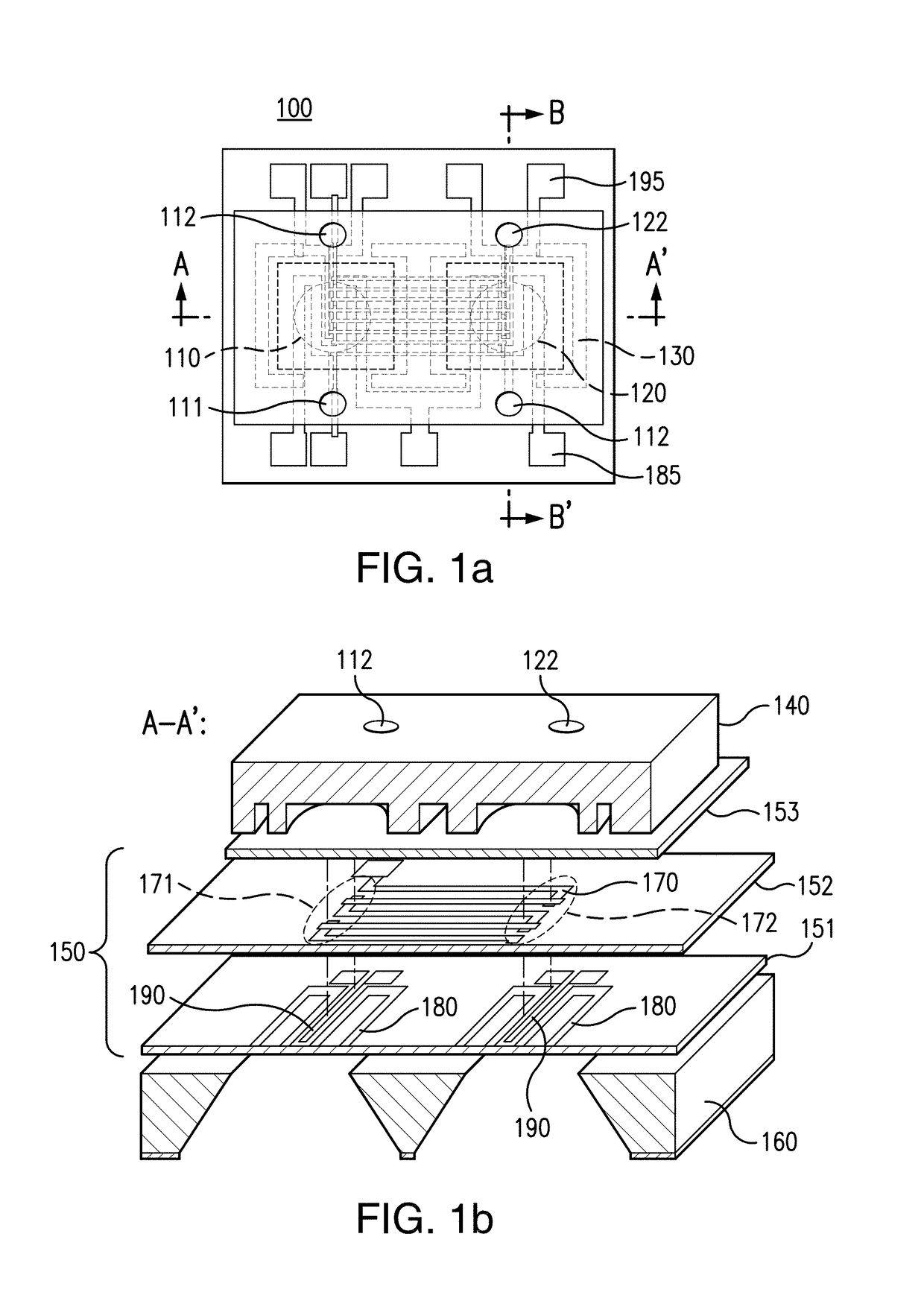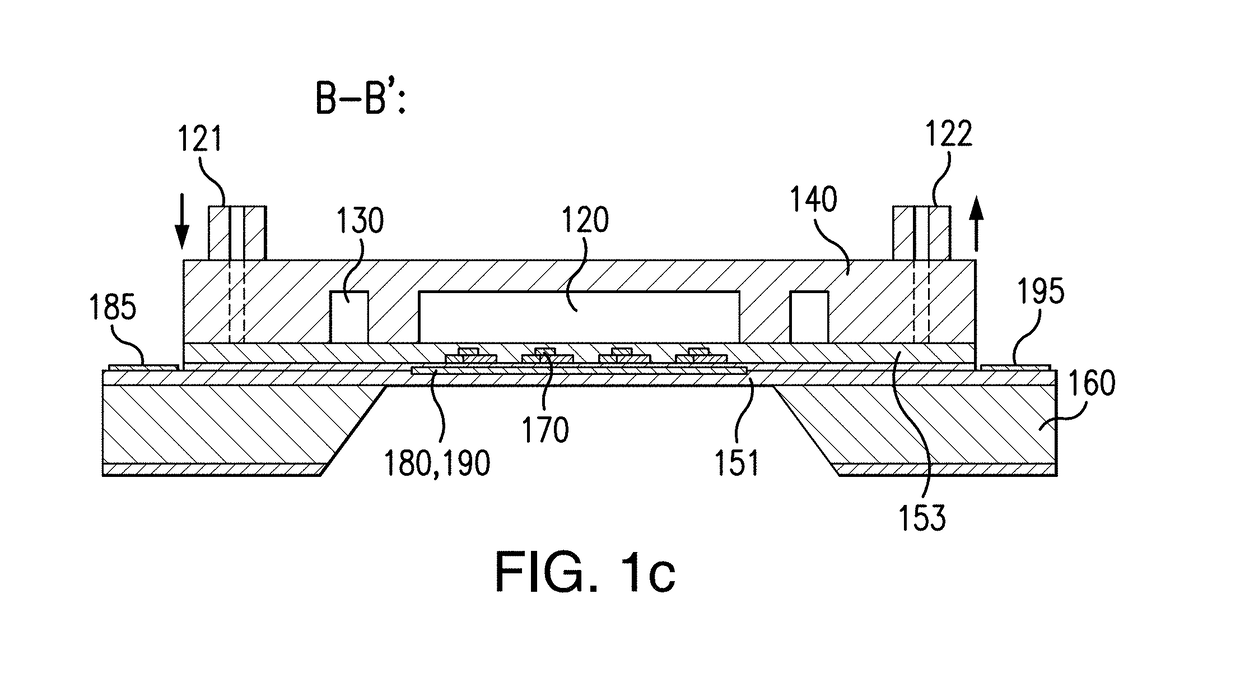Mems-based calorimeter, fabrication, and use thereof
a technology of mems-based calorimeters and calorimeters, which is applied in the direction of calorimeters, material thermal analysis, instruments, etc., can solve the problems of dsc instruments that cannot be used widely, require large sample consumption, and cannot be properly handled in a well-defined environment,
- Summary
- Abstract
- Description
- Claims
- Application Information
AI Technical Summary
Benefits of technology
Problems solved by technology
Method used
Image
Examples
example 1
on of Microdevice
[0136]This example illustrates a procedure to fabricate the microdevice, which substantially follows the outlined procedure described above in connection with FIG. 2. In particular, a 6-μm thick polyimide film was spin-coated on a silicon wafer (precoated with silicon dioxide). The TMAH etching into the backside of the wafer in the areas that correspond to the calorimetric chambers created an approximately 50 μm-thick residual wafer layer. After the curing of the polyimide, a chromium / gold thin film (5 / 200 μm) was deposited by thermal evaporation onto the polyimide layer. A second layer of polyimide was then coated on the microheaters and temperature sensors. Subsequently, Sb and Bi thin films (0.5 and 1.2 μm) were thermally evaporated and patterned using a standard lift-off process to form a 50-junction thermopile using a standard lift-off process. A layer containing polyimide-PDMS mixture was further coated on the thermopile. The chamber housing structure was fabr...
example 2
ric Measurement
[0137]In this example, the microdevice as fabricated according to Example 1 was calibrated and used to measure thermodynamic properties of certain biomolecules, e.g., thermodynamics of the unfolding of a protein.
A. Principle
[0138]DSC can measure differential heat capacity, i.e., the heat capacity difference between a sample and a reference material, as a function of temperature. When the sample and reference materials are subjected to identical temperature scanning, i.e., their temperatures are varied at a predetermined rate within a range of interest, the thermally induced activity of the sample molecules, which is either exothermic or endothermic, can cause a small temperature difference between the sample and reference materials (i.e., differential temperature or temperature differential). This differential temperature can be detected to reflect the differential power
ΔP=Ps−Pr (4)
where Ps and Pr are the thermal power generated in the sample and reference materials...
example 3
asurement
[0150]This Example illustrates the method of carrying out a AC-DSC measurement, as described above based on a microdevice presently disclosed. This MEMS AC-DSC approach can potentially enable measurements of low-abundance biomolecules with improved accuracy, as demonstrated by the application of the device to AC-DSC measurements of the unfolding of lysozyme.
A. Principle
[0151]AC-DSC can monitor the differential heat capacity, i.e., the heat capacity difference between a sample and a reference material, by varying the materials' temperatures at a specified constant rate via a thermally isolated enclosure equipped with temperature control functionalities, superimposed with a temporally periodic variation via identical AC modulation heating applied to the sample and reference (FIG. 3). The differential heat capacity can be obtained by the measurement of the differential temperature, i.e., the temperature difference between the sample and reference materials.
B. Fabrication of th...
PUM
| Property | Measurement | Unit |
|---|---|---|
| pH | aaaaa | aaaaa |
| temperatures | aaaaa | aaaaa |
| temperatures | aaaaa | aaaaa |
Abstract
Description
Claims
Application Information
 Login to View More
Login to View More - R&D
- Intellectual Property
- Life Sciences
- Materials
- Tech Scout
- Unparalleled Data Quality
- Higher Quality Content
- 60% Fewer Hallucinations
Browse by: Latest US Patents, China's latest patents, Technical Efficacy Thesaurus, Application Domain, Technology Topic, Popular Technical Reports.
© 2025 PatSnap. All rights reserved.Legal|Privacy policy|Modern Slavery Act Transparency Statement|Sitemap|About US| Contact US: help@patsnap.com



